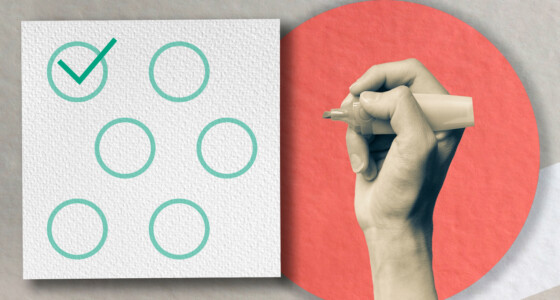

The stop-loss level is a vital part of any trade. Its aim is to protect you from losses. Whether you open positions on a 5-minute timeframe or plan to hold them for weeks, you must set the stop-loss boundary.
The general rule for all stop loss placement strategies is that the distance between an entry point and the stop-loss level should be calculated based on the profit target.
A risk/reward ratio (R/R ratio) allows investors to measure the potential returns against the potential losses. To calculate the ratio, you need to divide the difference between the entry and the stop-loss points by the difference between the profit and entry points. Simply saying, if you want to get $500, you may afford to lose $250. The bigger the ratio, the safer the trade is. Also, it’s vital to consider the size of an asset’s price fluctuations and calculate the stop-loss distance based on the asset’s average volatility.
Below you will find five methods to set the stop-loss boundary to win even with a losing trade.
1. Support and resistance levels
You won’t be able to learn proper stop loss placement without studying the basics. Support and resistance levels are the most effective tools for determining where the price turns around. To draw the support boundary, you need to find at least two minimums where the price turned up; to draw the resistance line, you need at least two maximums where the price turned down. The lines can be horizontal or angled when you draw trendlines in an up- or downtrend.
The rule is simple. Traders sell on the resistance line and buy on the support line. Therefore, you need to place a stop loss order several points below the support level and several points above the resistance level.
2. Bollinger bands
The idea of this approach is similar to the previous one. The Bollinger bands indicator consists of three lines — upper and lower bands and a middle line. The upper boundary is a resistance level, while the lower band stands for support. However, unlike the standard support and resistance levels, the price almost always goes beyond the upper and lower boundaries. Therefore, you should increase the size of the stop-loss level. Moreover, it’s vital to catch signals of other indicators or chart patterns.
3. Fibonacci levels
If you know how to draw Fibo levels, you will easily define where the price may rebound. 23.6%, 38.2%, 50%, 61.8%, and 78.6% are the key percentages that serve as support and resistance levels depending on the price direction. Please remember that the price may go beyond them too. Therefore, you should measure the average price fluctuations. This indicator is widely used for stop loss placement on Forex.

4. Pivot points
Pivot points are another technical indicator that sets support and resistance levels automatically. The points are recalculated according to the timeframe you use. However, the more reliable levels appear on larger periods. A traditional pivot points tool consists of three resistance, three support levels, and a pivot point. You can try other pivot point types, but the idea of support and resistance will always be the same.
5. Patterns
If you find a chart pattern, you are lucky. The patterns don’t often occur on the price chart. However, if there is one, you can easily identify the price target and a stop-loss level. Every pattern has its own rule. Still, usually, the distance between the top and bottom of the pattern is the distance the price may go if the pattern works. Therefore, it’s easy to calculate the stop-loss size according to the risk/reward ratio.
Takeaway
Many inexperienced traders set the stop-loss level too close to the entry point or don’t place it at all. You are recommended to avoid trading before stop loss placement. Otherwise, you risk being kicked off the market.








